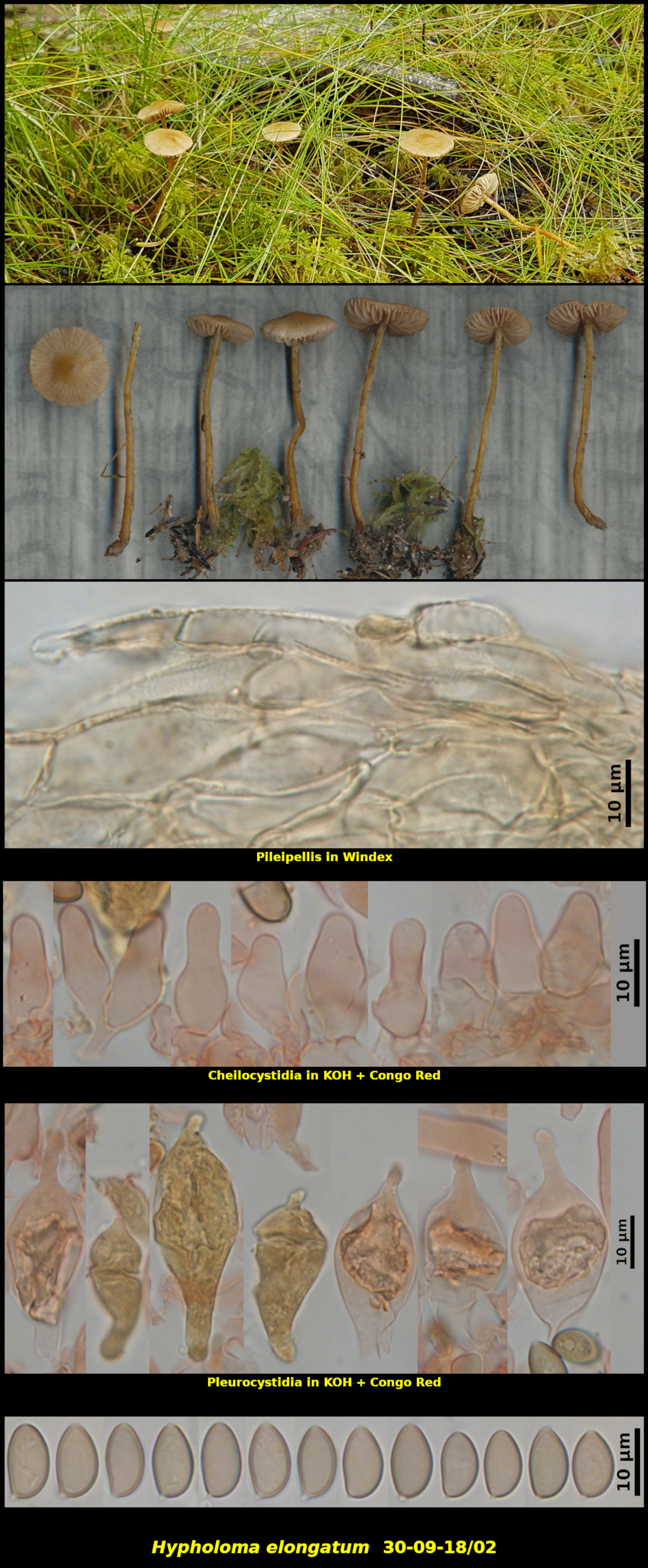Fleshy Fungi of New Brunswick >> Hypholoma elongatum
Hypholoma elongatum (Pers.) Ricken

Gregarious (6) among gametophytes of Sphagnum sp. and Carex sp. in sandy soil in the centre of an old woods road, associated with Abies balsamea and Betula cordifolia, Little Lepreau, New Brunswick (16-09-17/01).
Pileus not seen when young, conic-convex, with a small umbo, dry, glabrous, pale orange tan (HSV40:20:80-90), slightly more orange on the umbo, 15-21 mm in diameter. Stipe equal, cartilaginous, brittle, glabrous, pale greyish orange (HSV35:30-50:90), dry, 40-60 X 1.0-1.5 mm. Lamellae light brown (HSV35:20-30:80), subclose to subdistant, adnexed, not marginate. Flesh concolorous with the surface tissues, with a slightly raphanoid odour, lacking a distinctive taste.
Basidiospores yellow brown (HSV25:40:70) in spore print, ovoid, smooth, with an apical germ pore, not changing colour in Melzer’s Solution, 9.8-12.1 x 5.7-6.9 μm, Q = 1.58-1.92 (average[50]: 10.9 x 6.2 μm, Q = 1.77. Basidia short-clavate, 4-spored, with a basal clamp connection. Cheilocystidia forming a continuous sterile margin, ventricose to lageniform, usually with a basal clamp connection, 15-29 x 6.6-9.9 μm. Pleurocystidia abundant, not revivng well in KOH, ventricose, with a prominent and extended mucro, with a large refractive inclusion that often fills the entire cell, with a basal clamp connection, about 27-43 x 10.4-18.6 μm. Pileipellis a thin cutis of coarsely encrusted hyphae above a subpellis of shorter and broader hyphae.
Reconzed by its tall slender basidiomata with striate caps and a brown spore print. It occurs most commonly in moist habitats, including Sphagnum bogs.
Photograph: D. Malloch (30-09-18/02).